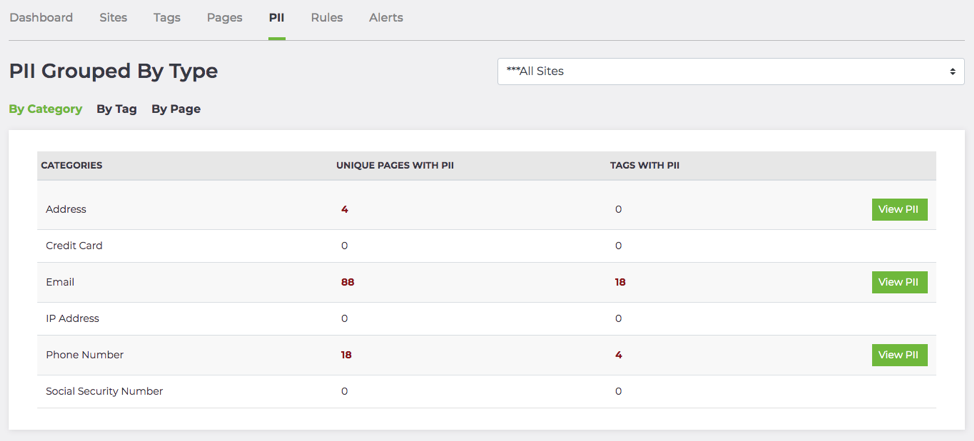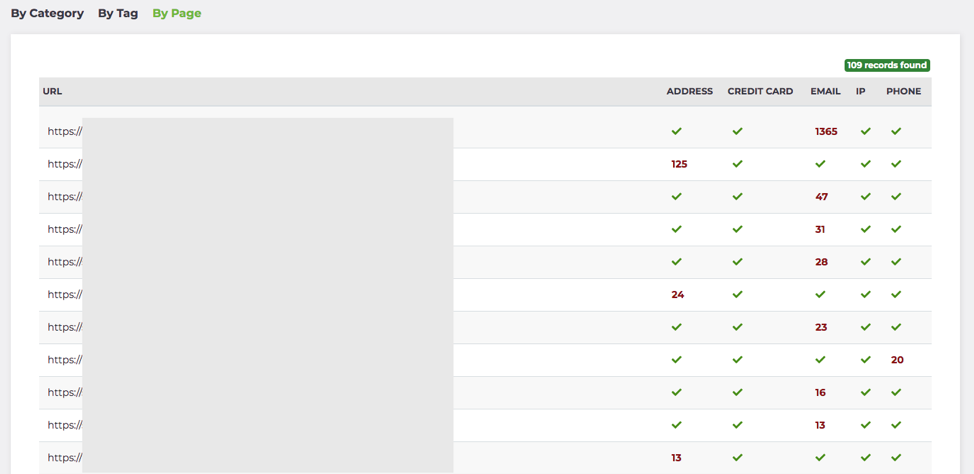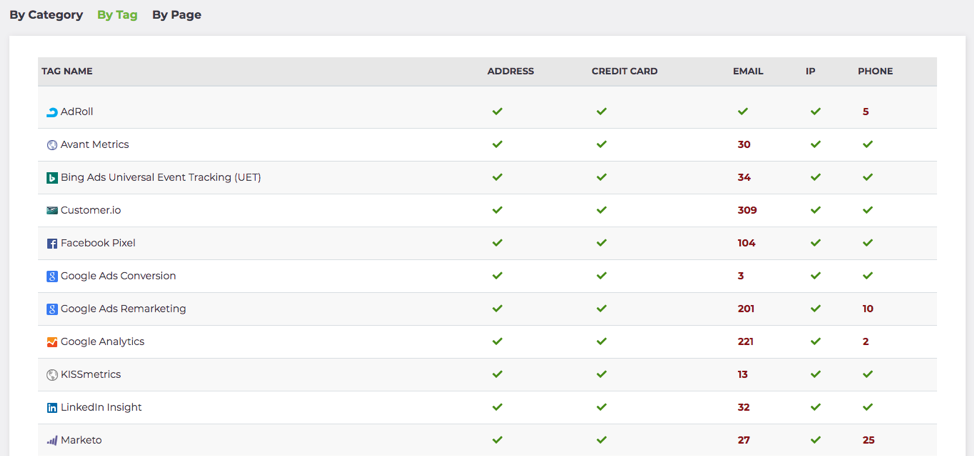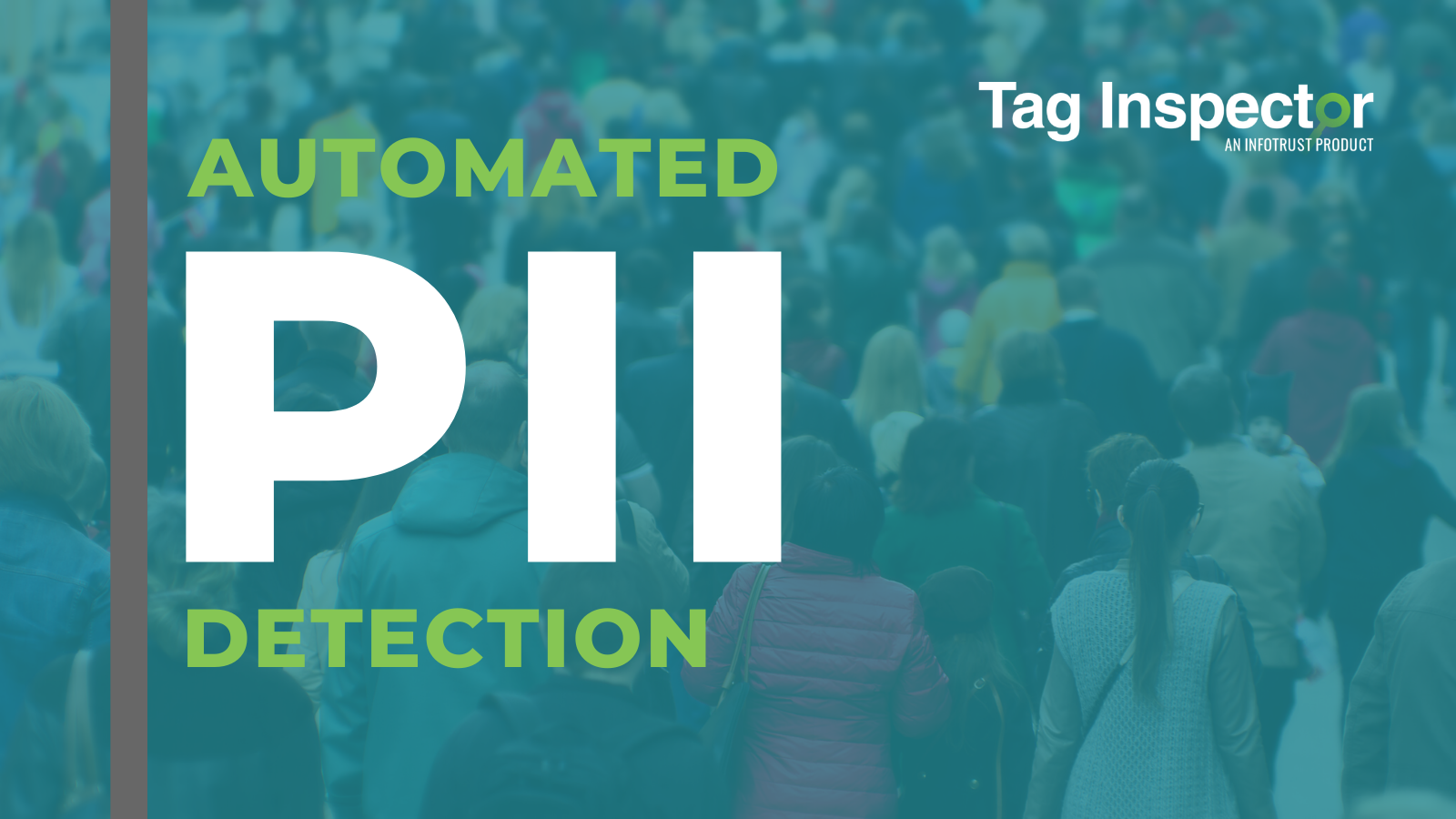The core requirement for an organization’s compliant data collection processes is an understanding of all data being collected by each platform loading across all digital assets. This visibility provides the foundation for requirements across laws and regulations such as CCPA, GDPR, COPPA, HIPPA, and more.
When it comes to assessing data being collected, the first (and arguably most important) place to start is with Personally Identifiable Information (PII). PII is clear-text data that directly identifies an individual. Examples would be things like an email address, social security number, address, etc. If these pieces of data are being sent to platforms you are working with from your digital properties, you must know about it and ensure that it is allowed behavior.
The risks associated with the collection of PII include violations of Terms of Service with many marketing and advertising platforms (such as Google Analytics), security vulnerabilities (if clear-text PII is being sent, that likely means it is accessible to be scraped by unauthorized third-parties), and potential compliance violations.
To give your organization visibility into PII being collected from your websites, Tag Inspector has introduced Automated Personally Identifiable Information Detection.



Functionality
Once implemented, Tag Inspector will automatically flag any identified instances of PII being collected via tags loading across the website. This includes emails, credit card numbers, addresses, and phone numbers automatically being detected when passed in a network request from any web page being monitored.
Process
For the automated PII detection, Tag Inspector Realtime is required to be implemented on the webpages being audited. Data is collected via Realtime from the live environment. Tag Inspector will then automatically flag any instances of PII being passed by tags on the site, providing you insights such as what tags are passing what values, on what pages, with page-load information to then help in diagnosing and fixing the underlying cause of this behavior.
Partner Involvement
This functionality requires the implementation of Tag Inspector Realtime across all pages of the websites being audited. This implementation can be completed via a tag management system or directly in the source code of the site pages.
Interested in learning more about how Tag Inspector can help with PII auditing and monitoring for your website? Contact us now to learn more.
